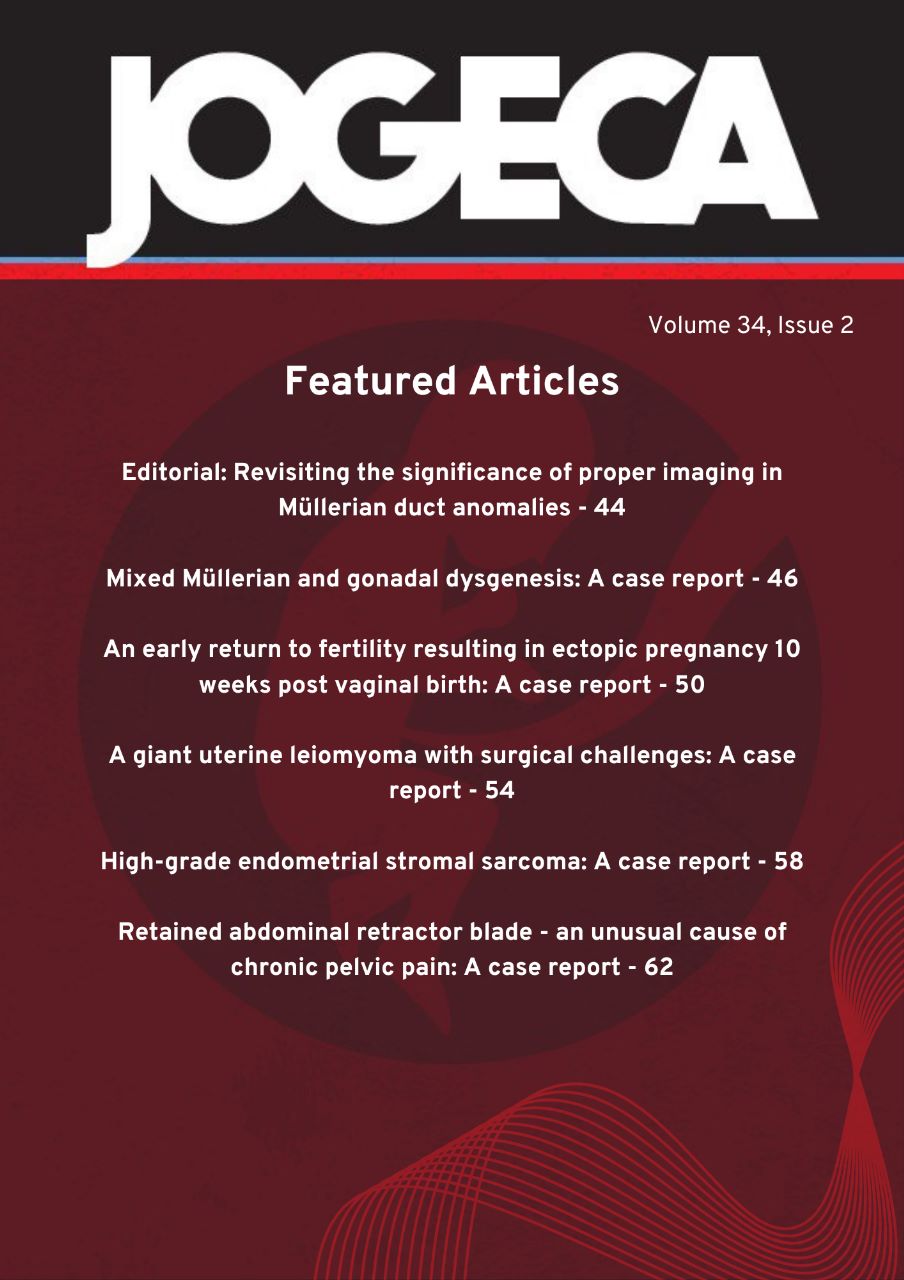HIGH PREVALENCE AND SEVERITY OF POSTPARTUM RETINOVASCULAR CHANGES FOLLOWING PRE- ECLAMPSIA WITH SEVERE FEATURES COMPARED TO NORMAL PREGNANCY.
DOI:
https://doi.org/10.59692/jogeca.v30i2.271Keywords:
Retinovascular changes, postpartum, pre-eclampsia, Kenyatta National HospitalAbstract
Background: Hypertensive retinopathy complicates about 40-100% of pregnancies with hypertensive disorders and its severity worsens with progression of hypertension.
Reactive retinal vessel changes demonstrably also mirror cardiovascular changes in the course of normal pregnancy. There is low utility of fundoscopy in assessing target organ damage and prognosis in pre-eclampsia in low resource setting.
Objective: To compare postpartum maternal retinovascular (RV) findings between pregnancies complicated with preeclampsia with severe features (PES) and normal pregnancies at Kenyatta National Hospital (KNH).
Methodology:
Design: Comparative cross-sectional study conducted between May 2017 and March 2018. Setting: KNH, a regional Teaching and Referral hospital.
Study population: Sixty-five women within 72 hours postpartum without preexisting ocular or medical co morbidities following normal pregnancy (n=35) or pregnancies complicated with PES (n=30).
Data collection: Participants were interviewed on sociodemographic and reproductive health characteristics and clinical parameters obtained from medical records. Visual acuity assessment was done using a portable LogMAR chart and non-mydriatic fundus photography used for retinovascular evaluation. RV changes were graded using Keith Wagner grading.
Data analysis: Postpartum retinovascular findings and severity grades were analyzed and presented as percentages and compared between the two groups using Chi square or Fisher’s exact test. Odds ratios (OR) of retinovascular changes following pre-eclampsia compared to normal pregnancy was estimated. A p value of <0.05 and 95% confidence interval (CI) that doesn’t include the null value were considered significant.
Results: Overall prevalence of hypertensive retinovascular change was 90.8% (83.3% in PES versus 97.1% in normal pregnancies). We found statistically significantly greater odds, OR 5.05 CI (0.93, 27.6) of severe retinovascular changes after pregnancies complicated with PES (p=0.045).
Conclusion: There is high but comparable prevalence of maternal retinovascular changes within 72 hours postpartum after pregnancies complicated with PES or normal pregnancy. PES is associated with greater odds of postpartum retinovascular changes Compared to normal pregnancies.
Downloads
Published
How to Cite
Issue
Section
Categories
License
Copyright (c) 2018 Authors

This work is licensed under a Creative Commons Attribution 4.0 International License.




